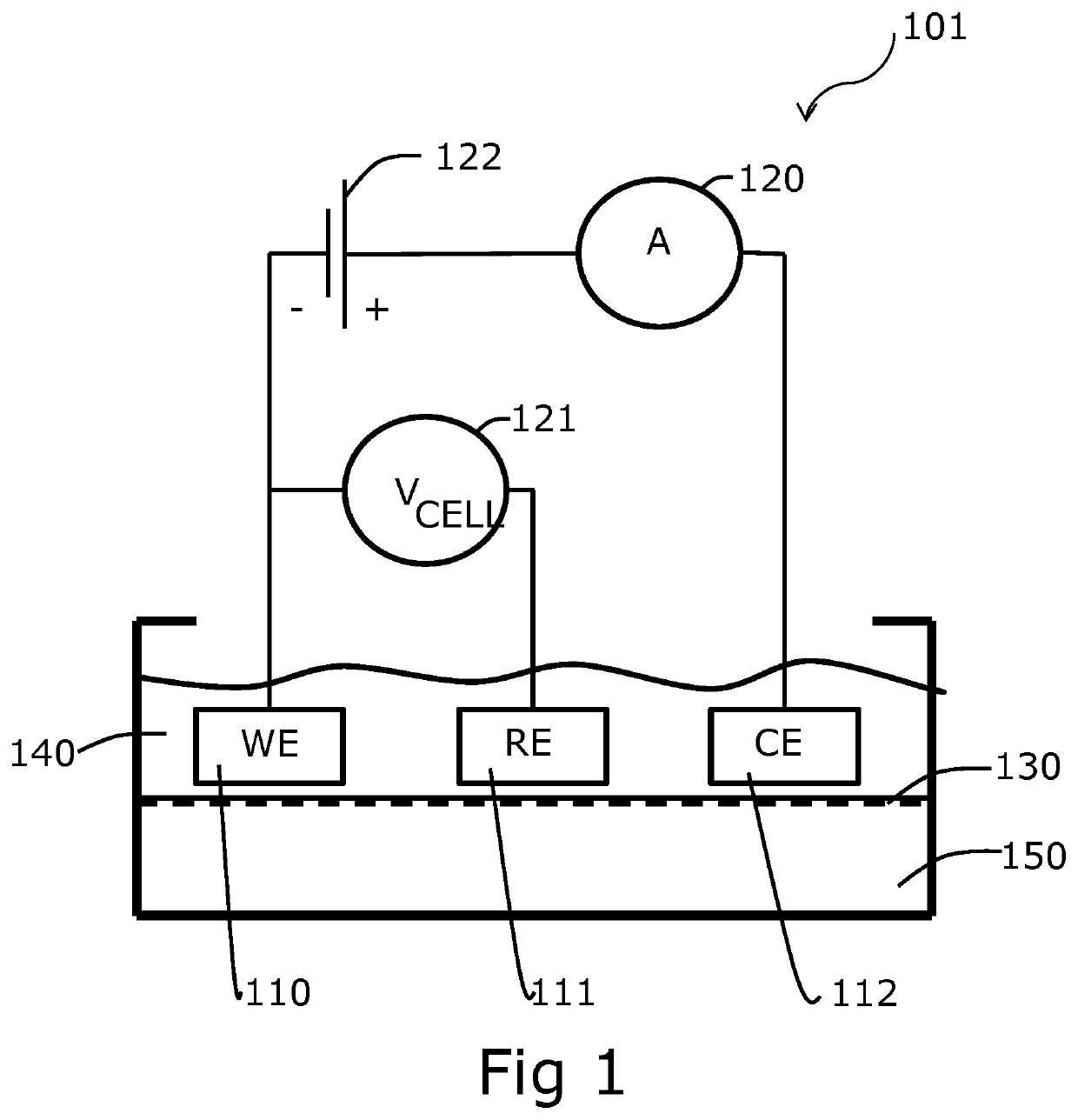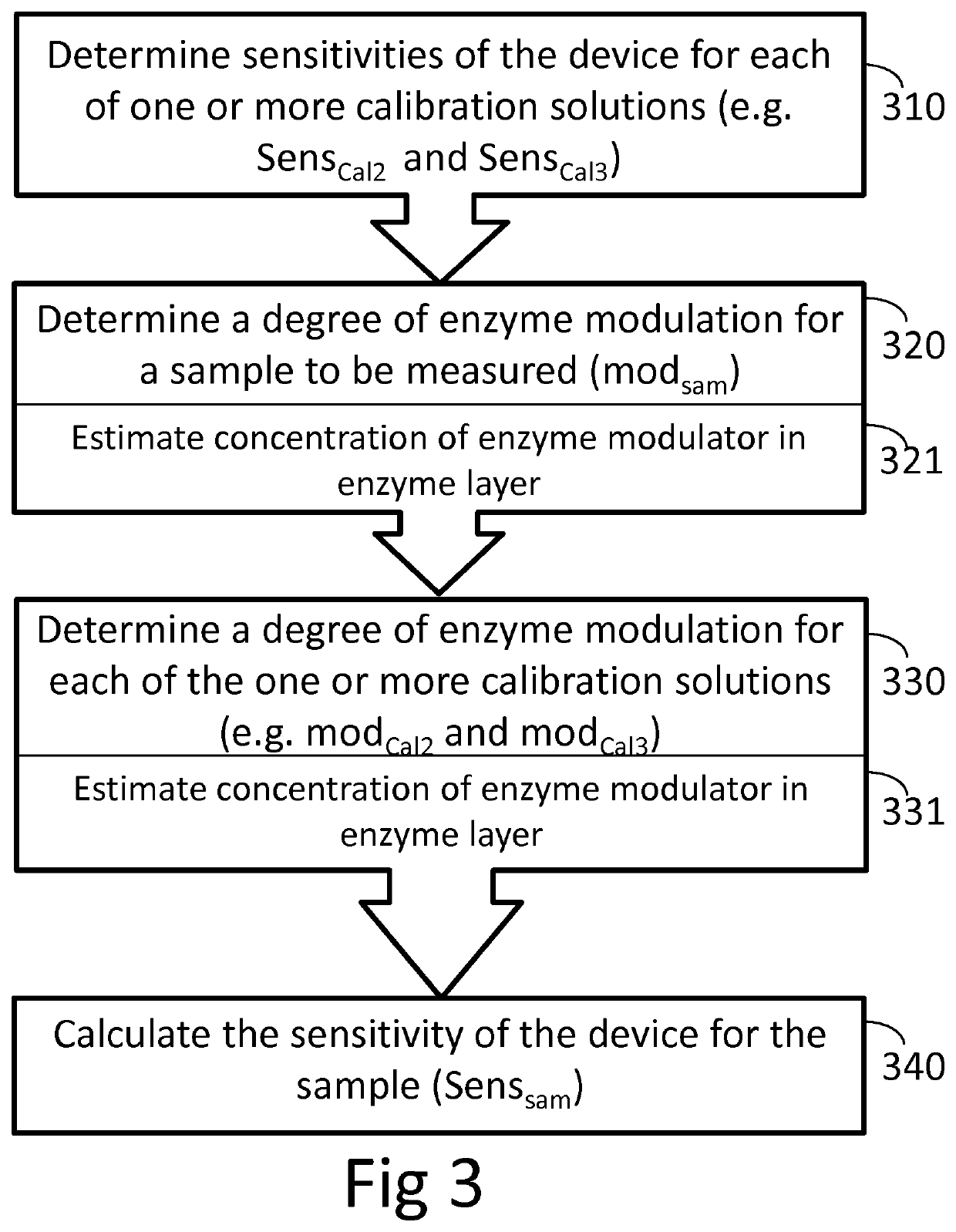Method for correcting Crea sensor for calcium inhibition
a technology of creatinine and measuring device, which is applied in the direction of biochemistry apparatus and processes, enzymes, material testing goods, etc., can solve the problems of modulator remaining affecting accuracy, and achieve the effects of reducing the time between two samples, and reducing the number of samples
- Summary
- Abstract
- Description
- Claims
- Application Information
AI Technical Summary
Benefits of technology
Problems solved by technology
Method used
Image
Examples
Embodiment Construction
[0033]Reference will now be made to FIG. 1 which is a schematic diagram of a three electrode amperometric measuring system 101. An amperometric measuring system may have at least two electrodes: a working electrode (WE) 110 and a combined counter and reference electrode (CE / RE). For the three-electrode amperometric measuring system 101, the functions of the CE / RE electrode are split into two separate electrodes: the reference electrode (RE) 111 and the counter electrode (CE) 112. The example amperometric measuring system 101 also includes an ammeter 120, a voltmeter 121 and a voltage source 122 and the electrolyte solution 140.
[0034]The WE 110 is a positively charged electrode where an oxidation reaction occurs. Alternatively, the WE 110 may be a negatively charged electrode where a reduction reaction occurs. The RE 111 is typically made of Ag / AgCl and is able to maintain a stable potential, especially if no current runs through it, thus the need for a CE 112 for passing the current...
PUM
| Property | Measurement | Unit |
|---|---|---|
| pH | aaaaa | aaaaa |
| time | aaaaa | aaaaa |
| pKa | aaaaa | aaaaa |
Abstract
Description
Claims
Application Information
 Login to View More
Login to View More - R&D
- Intellectual Property
- Life Sciences
- Materials
- Tech Scout
- Unparalleled Data Quality
- Higher Quality Content
- 60% Fewer Hallucinations
Browse by: Latest US Patents, China's latest patents, Technical Efficacy Thesaurus, Application Domain, Technology Topic, Popular Technical Reports.
© 2025 PatSnap. All rights reserved.Legal|Privacy policy|Modern Slavery Act Transparency Statement|Sitemap|About US| Contact US: help@patsnap.com



